Imaging Projects
In this blog, I will share the results of all of my imaging projects. The newest will be at the top and the oldest will be further down the stack. Going back in time here is interesting - some of my early stuff was pretty rough - but I did not see it that way at the time - I was thrilled to get anything back that looked like an image! Hopefully, you will see how my work has progressed with time!

IC 5070 - The Pelican Nebula! 18.75 hours of SHO (my longest integration yet!)
My third attempt - and my finest - at IC 5070 - The Pelican Nebula.
This is the result of almost 19 hours of narrowband exposure on my Williams Optics 132 FLT APO platform with a 0.8 reducer and an ASI2600MM-Pro camera.
This was another image that was captured from my new observatory tht allowed capture on marginal nights.

SH2-124 - The Hidden Nebula (~14.2 hours in SHOrgb)
SH2-124 is a rich region of stars, dark dust, and emission nebulae located about 8,500 light-years away in the constellation of Cygnus.
This image is the result of 14.2 hours of SHOrgb data collection with my small Akskar FRA400 telescope platform.

IC 5068 - The Forsaken Nebula and the “Black Waterfall”- (11.9 hours in SHOrgb)
Astrobin Top Pick Nominee!
IC 5068 is a very faint nebula that is part of the North American/Pelican Nebula region and is often passed over for these brighter nebulae. But this region is a beautiful piece of the sky in narrowband!
Shot with my AP130 Platform with ~12 hours of SHO and RGB-Stars capture.
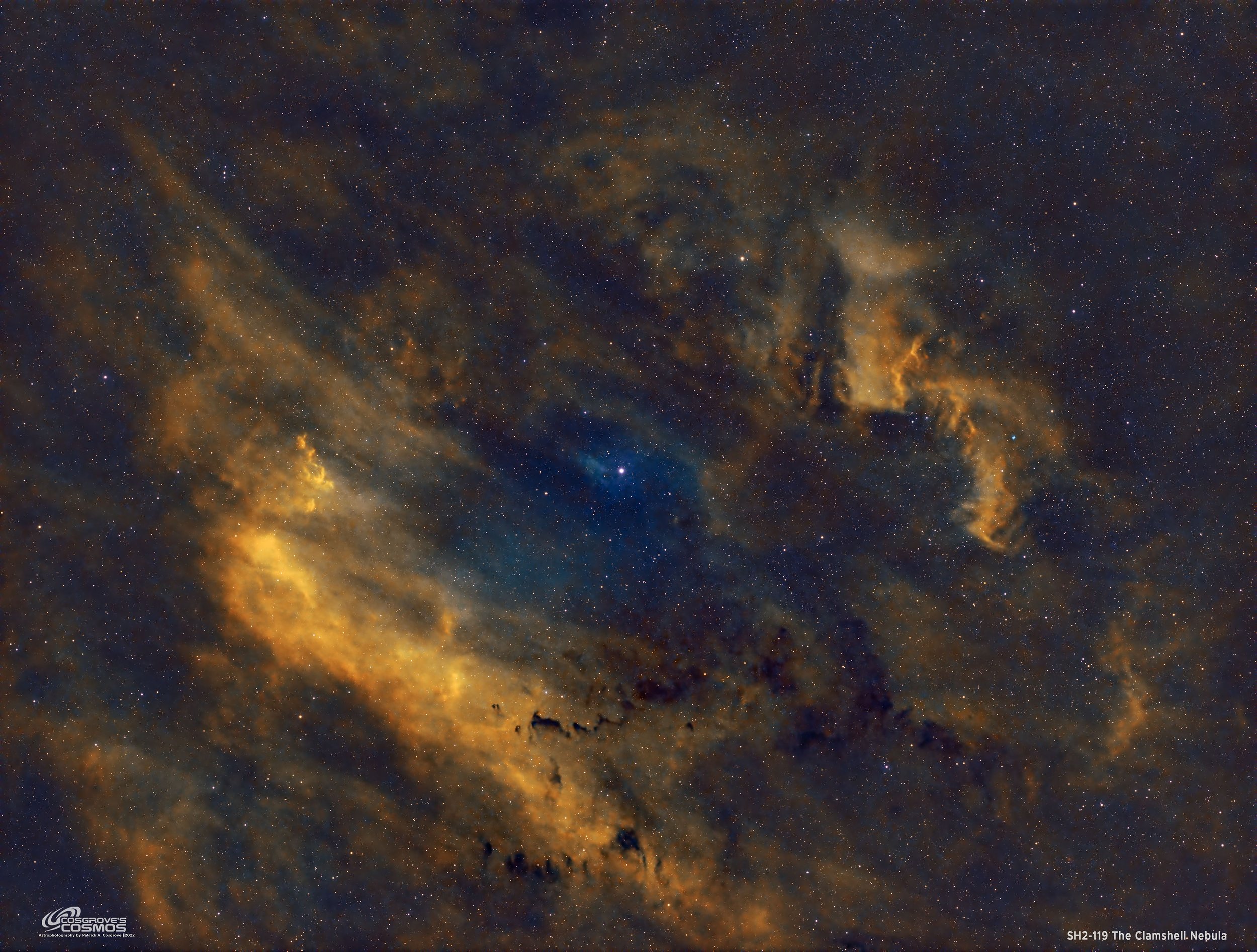
SH2-119 The Clamshell Nebula (3.5 Hours in SHO) - An Unintended Image
My second image of the year started as a disaster and motivated me to move to NINA. I spent a few nights learning NINA during the bright Moon cycle, knowing the subs would be a waste. Lo and behold, there was an image there!
This is SH2-119—The Clamshell Nebula—3.5 hours in SHO. Read the story of my trials and tribulations that led to this image!
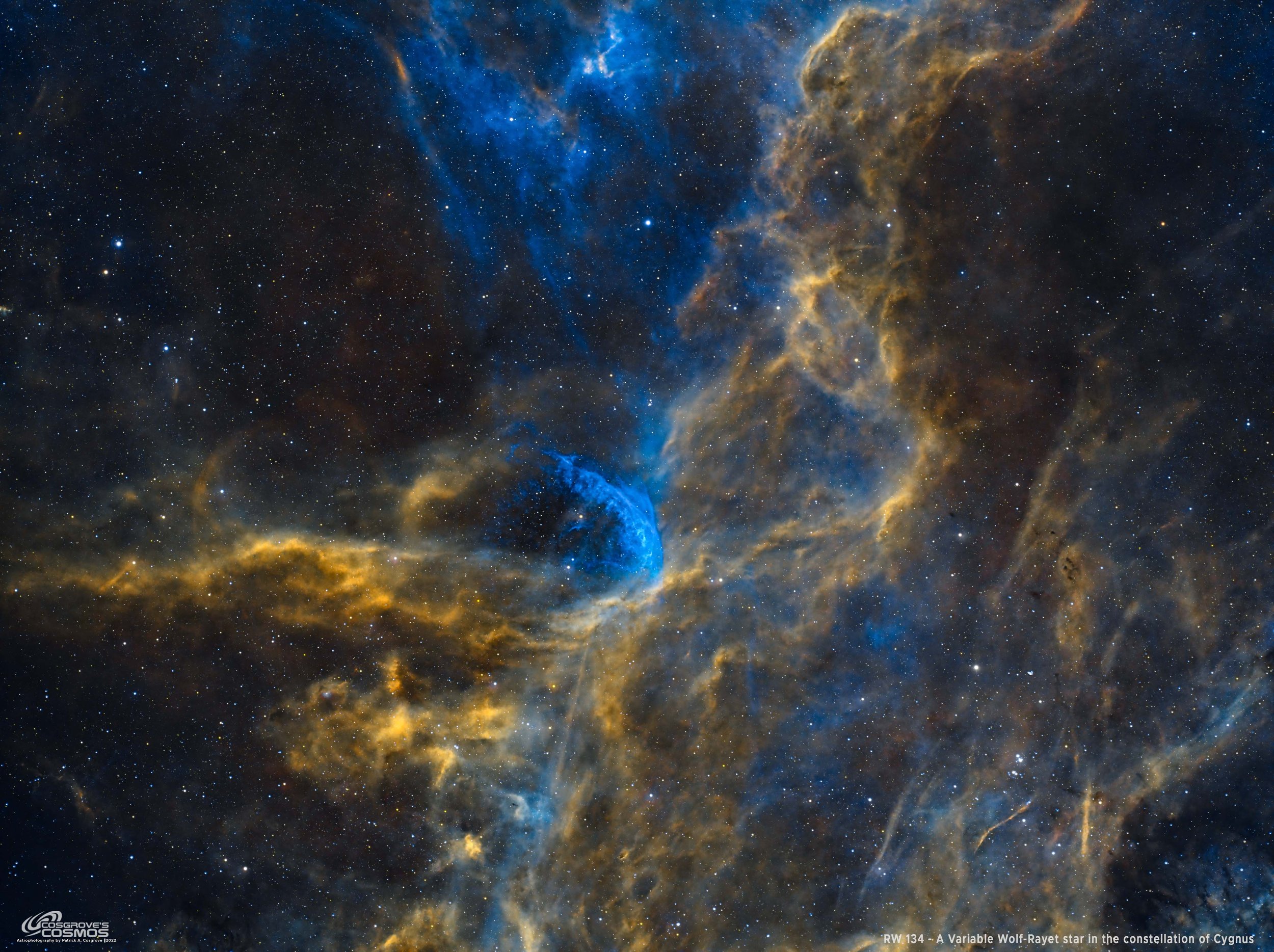
WR 134 - A Wolf-Rayet Star Region In Cygnus- 15.5 Hours in SHO
This is the third and final Imaging Project resulting from data collected during a recent - and very rare for this year - clear string of nights!
This is WR134 - a Variable Wolf-Rayet Star located 6,000 light-years away in the constellation Cygnus. This is a very interesting and rich area of the sky with a lot of objects in view. This includes WR134, WR135, and WR137 - the very first Wolf-Rayet stars ever found. These stars stood out as they had broad emission lines in their spectra instead of just absorption lines typically seen in stars.. These stares are massive and hot and have short lives.
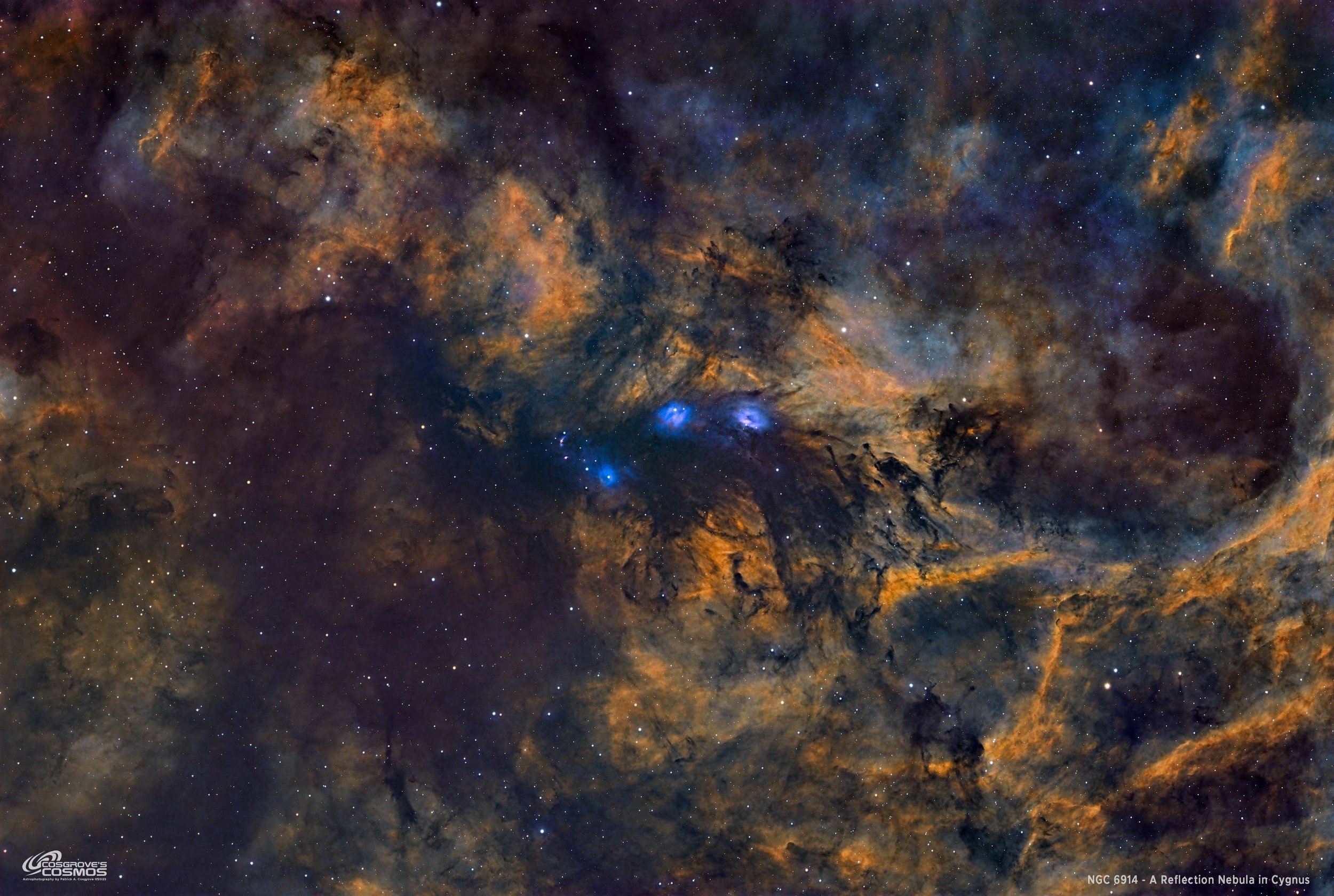
NGC 6914 - The Spider Nebula (my name!) - 14.5 Hours in SHOrgb
This is the second Imaging Project resulting from data collected during a recent - and very rare this year - clear string of nights!
This is NGC 6914 - a rich HII region located 6,000 light-years away in Cygnus. Typically shot in broadband RGB, decided to go after a narrowband version. This one resulted from 14.5 hours of SHOrgb data. The stars are broadband RGB, and the nebula is SHO Narrowband.
This object has no common name and I am proposing that we call it “The Spider Nebula!”
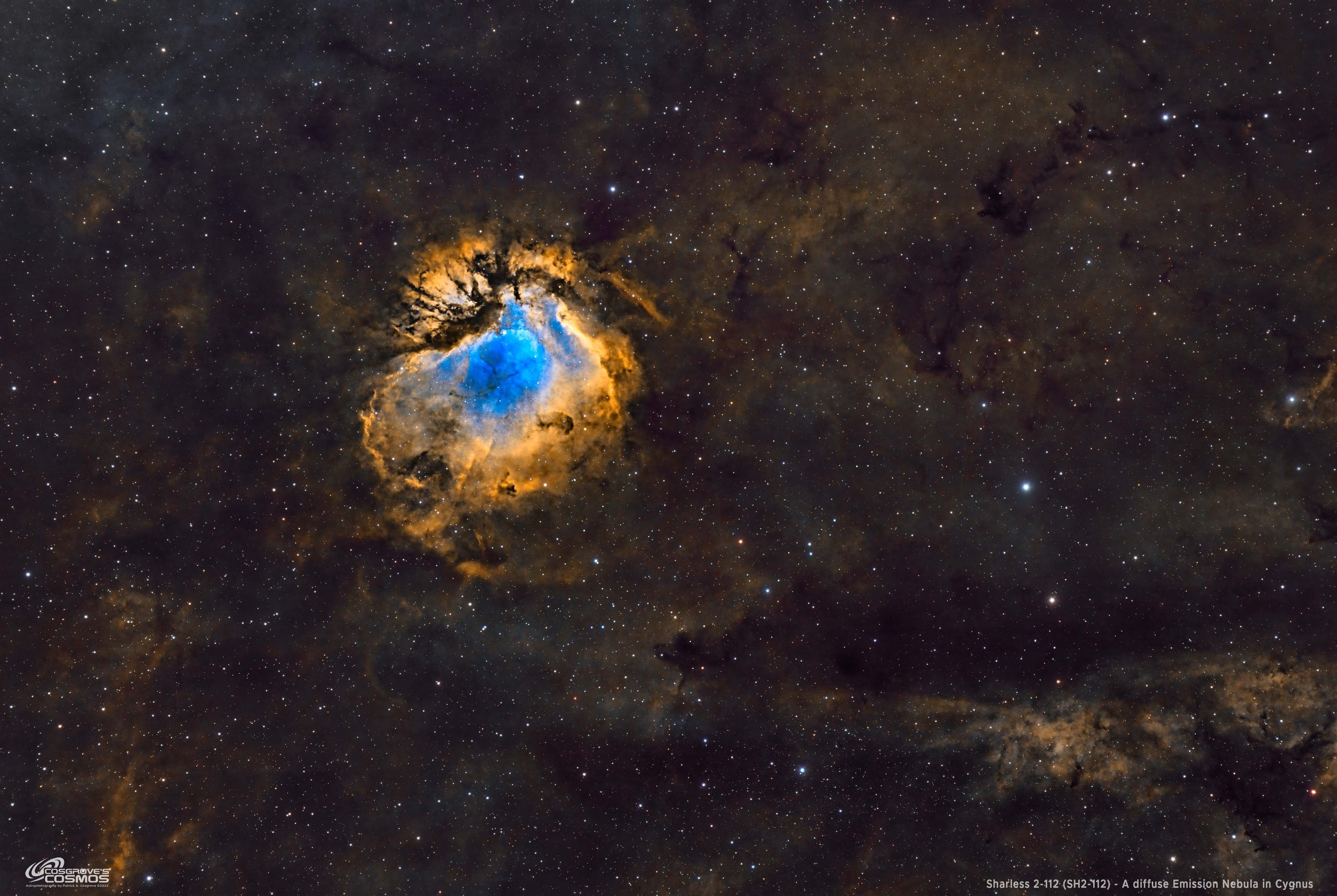
SH2-112 - A Diffuse Emission Nebula in Cygnus - 15.7 Hours in SHOrgb
Finally! Some clear nights and some new fresh from the universe photon data! This imaging project covers SH2-112 - A diffuse emission nebula located about 5,600 light-years away in Cygnus. This is the result of 15.6 hours of SHOrgb data. Not of lot of info is available about this beautiful object, but I find it fascinating to study!
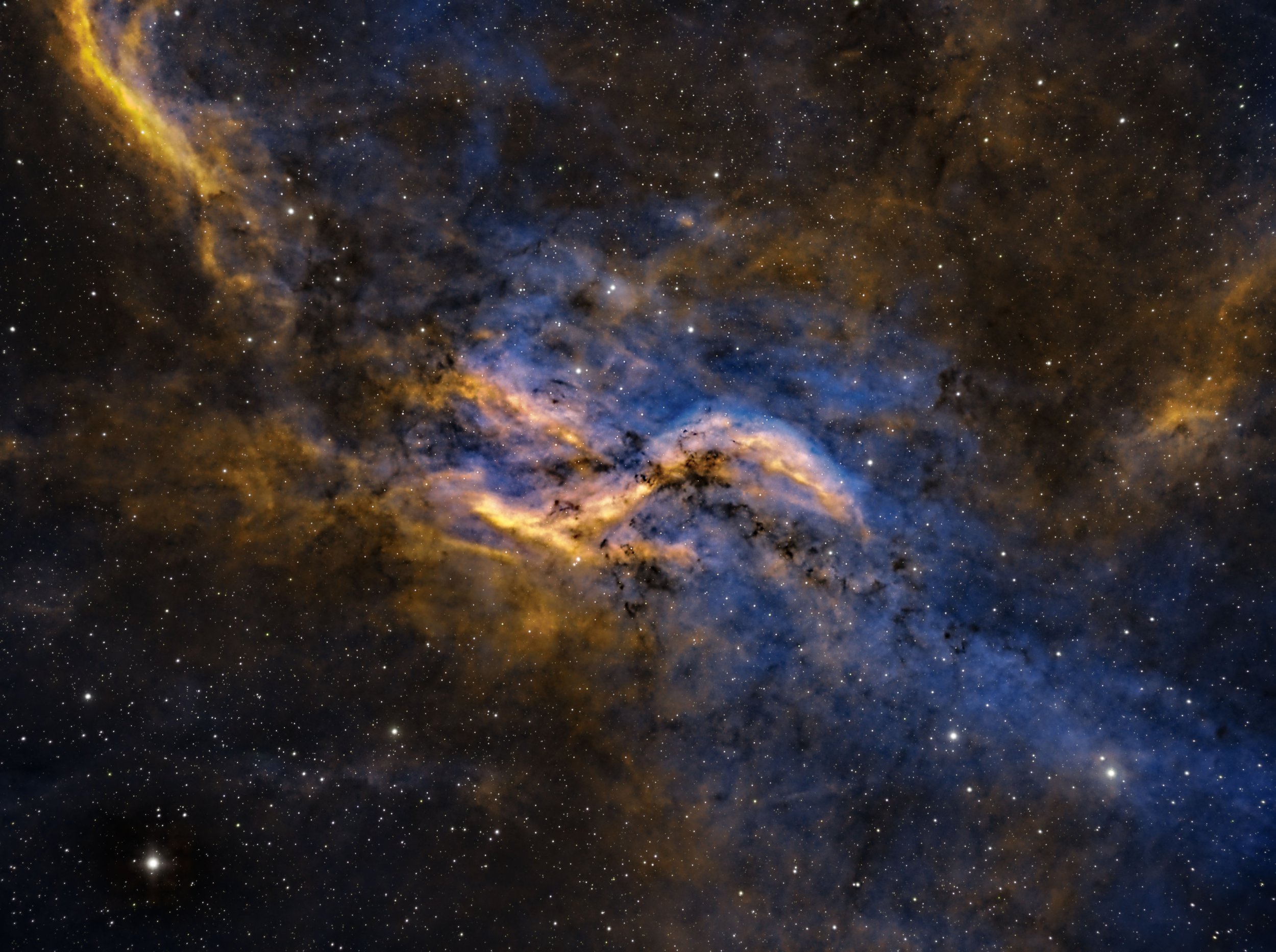
DWB 111/119 - A Reprocess of The Propeller Nebula - in SHO ~ 10 hours
This is a Reprocessing Project for data collected for DWB 111/119 in Sept of 2021.
I was never happy with the initial image. I wanted to see if I could make it better. I had a really hard time figuring out where I wanted this image to go - I think the final version is better than the original but I am not sure. You judge!
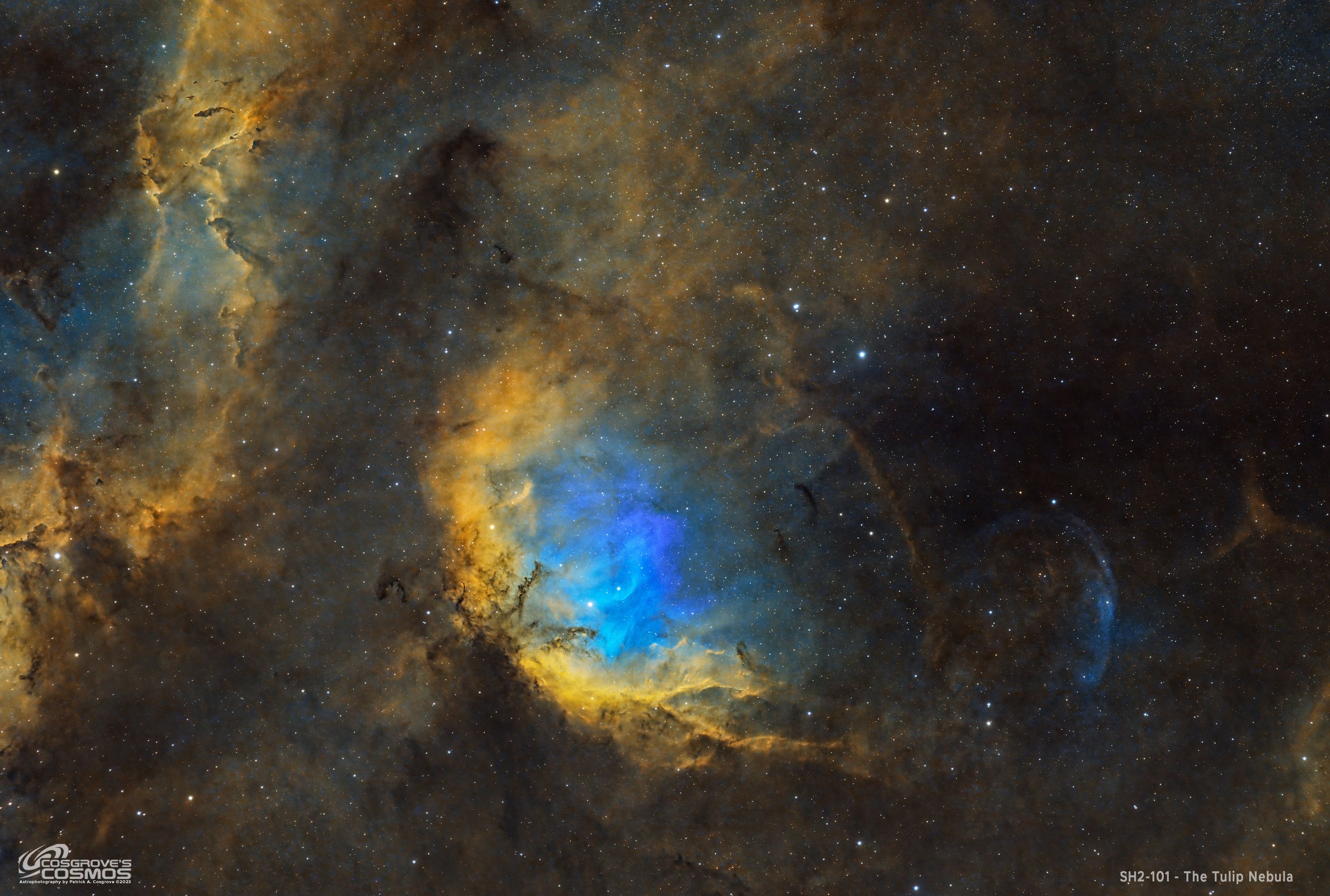
SH2-101 - A Reprocess of The Tulip Nebula - 12.8 Hours in SHOrgb
This is a REPROCESSING PROJECT for Sharpless 101 (specifically Sh2-101) also known as the Tulip Nebula. This object is located approximately 6000 light-years away in the constellation of Cygnus (The Swan). This was a 12.8-hour integration with the AP130 platform using the ZWO ASI2600MM-Pro Camera.
I was able to significantly improve the image and am quite pleased with the improvement I was able to produce - but you be your own judge of this!
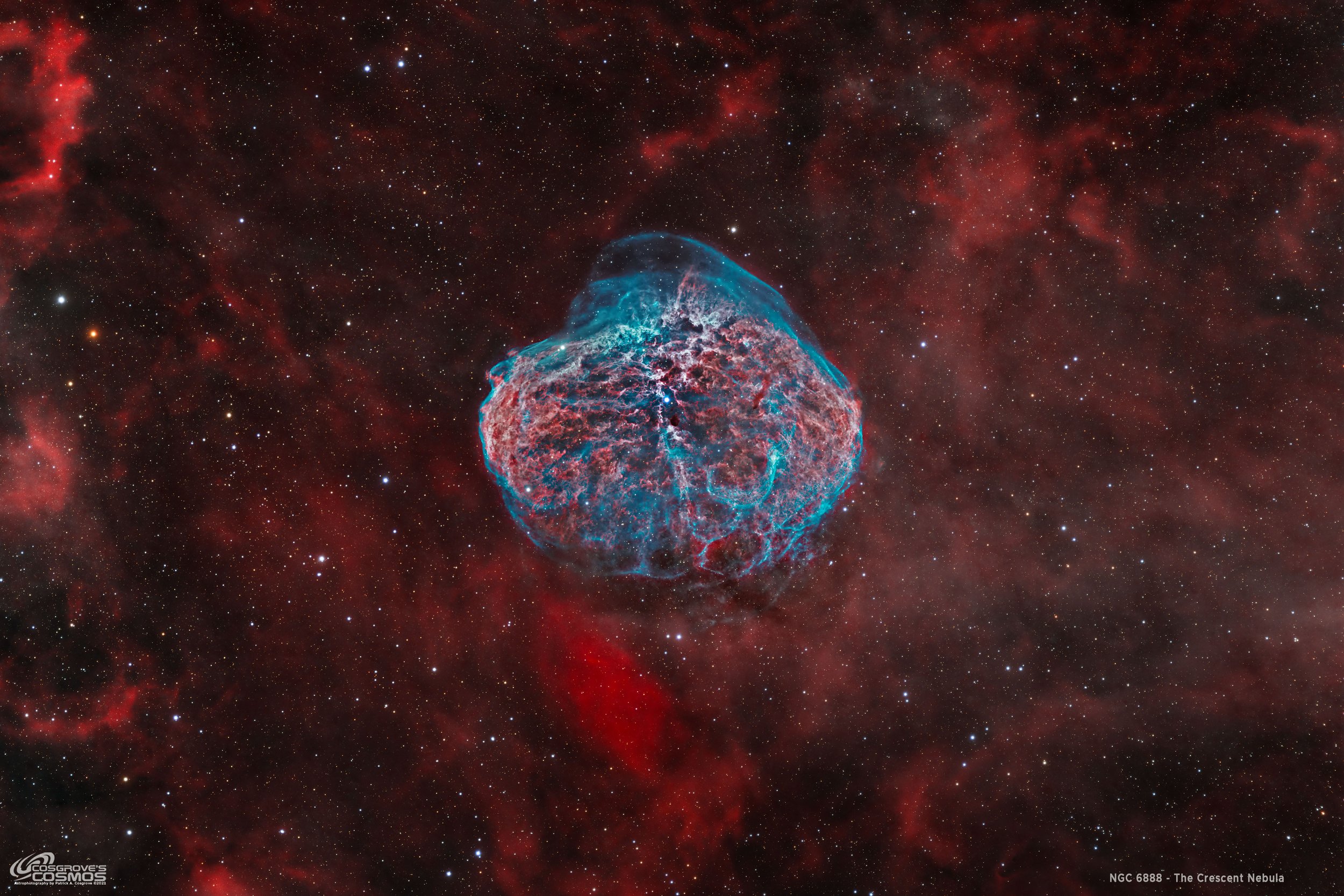
NGC 6888 - A Reprocess of The Crescent Nebula ~11 hours in HOOrgb
NGC 6888 - The Crescent Nebula is a famous emission nebula located in the constellation of Cygnus. This is a reprocessing project using image data first captured in September 2022.
SInce. I have no new data to process due to the wildfire smoke, I decided to use some new tools and processes to see if i could pull more details out from the O3 shell that surrounds the nebula.
THe resulting image show much more O3 detail - including some interesting convection cells towards the bottom of the nebula
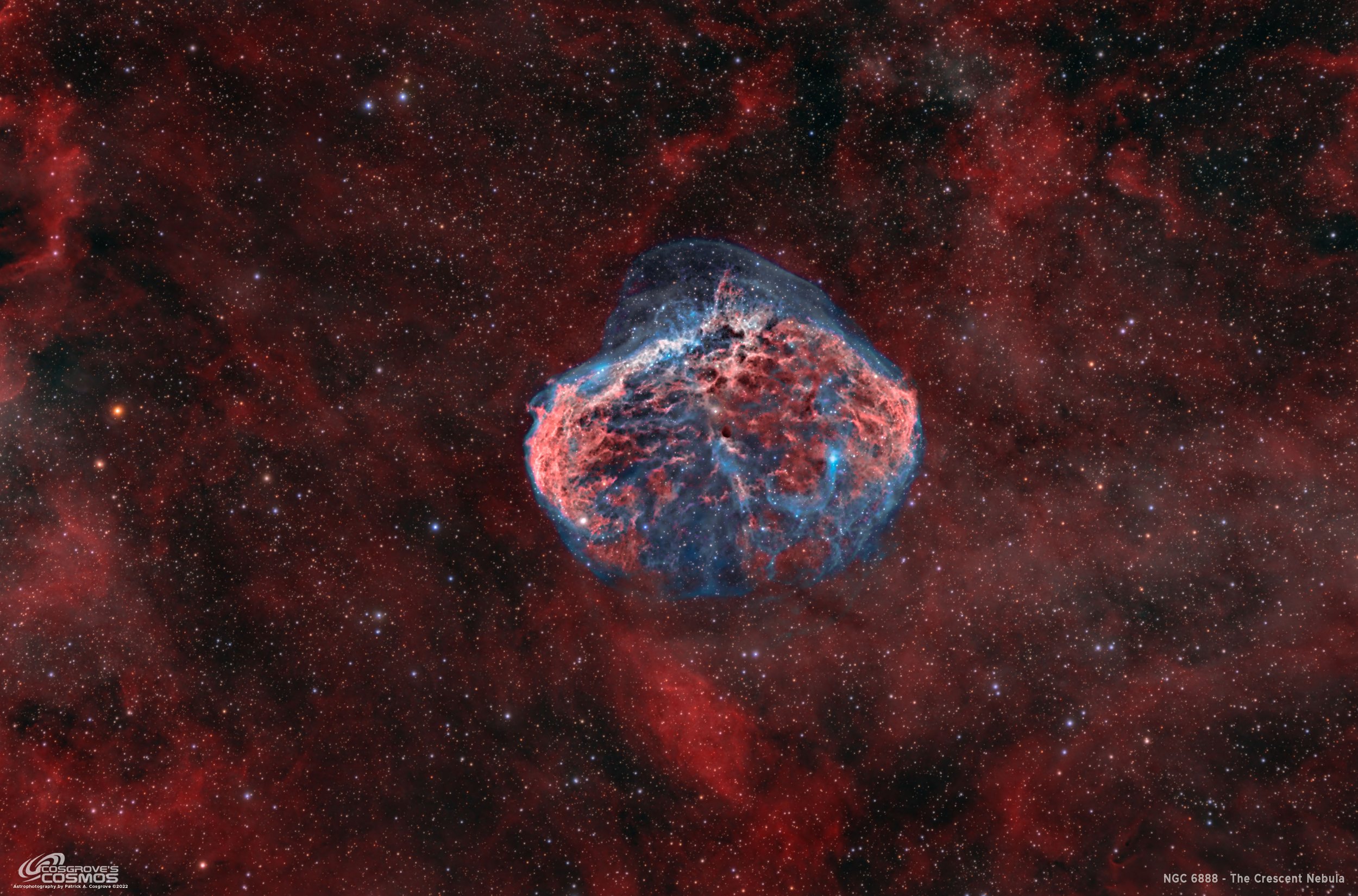
NGC 6888 - The Crescent Nebula - 12.9 hours in HOOrgb
NGC 6888 - The Crescent Nebula is a famous emission nebula located in the constellation of Cygnus. This is my third time imaging this target, and this is clearly my best take on it yet! This image is the result of 12.9 hours of narrowband and broadband integration - all shot on my Astro-Physics 130mm EDT and a ZWO ASI2600MM-Pro camera, I shot this as a bi-color HOO image an dused RGB data stars in it. Extensive use of starless processing was used to get this result. See more details in the posting.
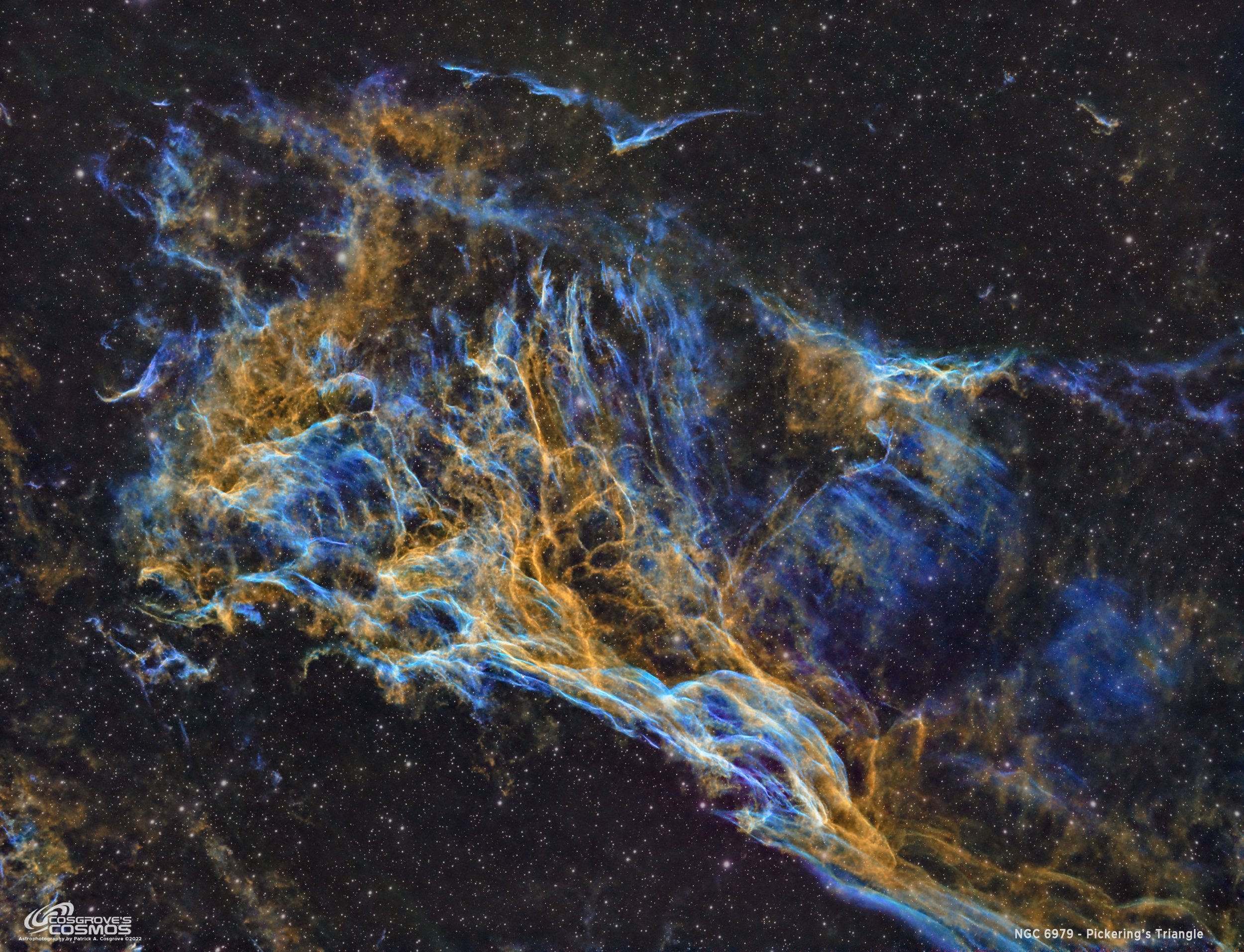
NGC 6979: Pickering’s Triangle ~ 12 hours in SHO
Pickering’s Triangle is a smaller and fainter section of the Cygnus Loop. While most portions of this supernova remnant have NGC catalog designations, Pickering's Triangle does not. It was discovered after the New General Catalog was published and thus missed out! Often NGC 6979 is used for this object but that is not technically correct. This image is the result of ~12 hours of narrowband exposure taken with my William Optics 132mm FLT APO Platform and rendered using the Hubble SHO palette.
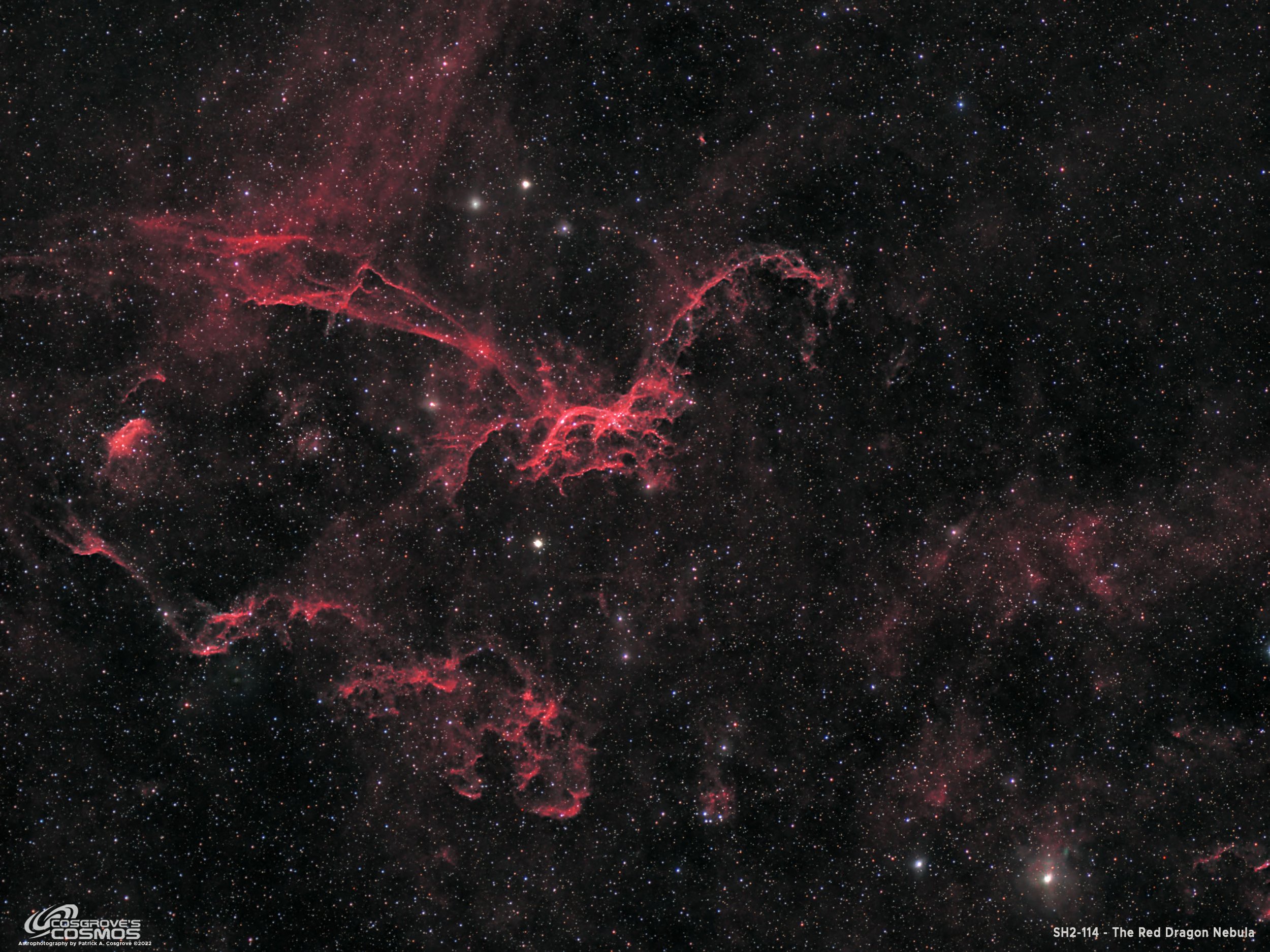
SH2-114 -The Flying Dragon Nebula - a VERY Faint Challenge Target - 17.5 hours HSSrgb
SH2-114 - The Flying Dragon Nebula - is an extremely faint emission nebula found in Cygnus. This has proven to be a challenging target. Primarily shot as a Bi-Color Narrowband Ha/S2 image, I found it was very hard to see the nebula in a single 5-minute sub! I ended up going back to capture more data over 8 nights in total spanning two moonless cycles. I also collects RBG data so that I could replace the stars with natural color RGB stars. two moonless cycles of the moon to capture data over 8 nights. I ended up with a total of 17.5 hours - my longest integration to date! And still it was a challenge to process this image!

NGC6995/IC1340 - The Bat Nebula! - 13.9 hours in SHO
The Bat Nebula is actually a small portion of the Eastern Veil Nebula, designated as either NGC6995 or IC 1340. This is a close-up of a fragment of a supernova remnant located 2400 light-years away in the constellation of Cygnus. This is a 13.9-hour integration in narrowband using my William Optics 132mm FLT APO scope and the ZWO ASI1600MM-Pro camera. The deep integration produced some wonderful data of a region of the sky that is both subtle and complex at the same time. Look at it in full resolution to experience this amazing part of the sky!
